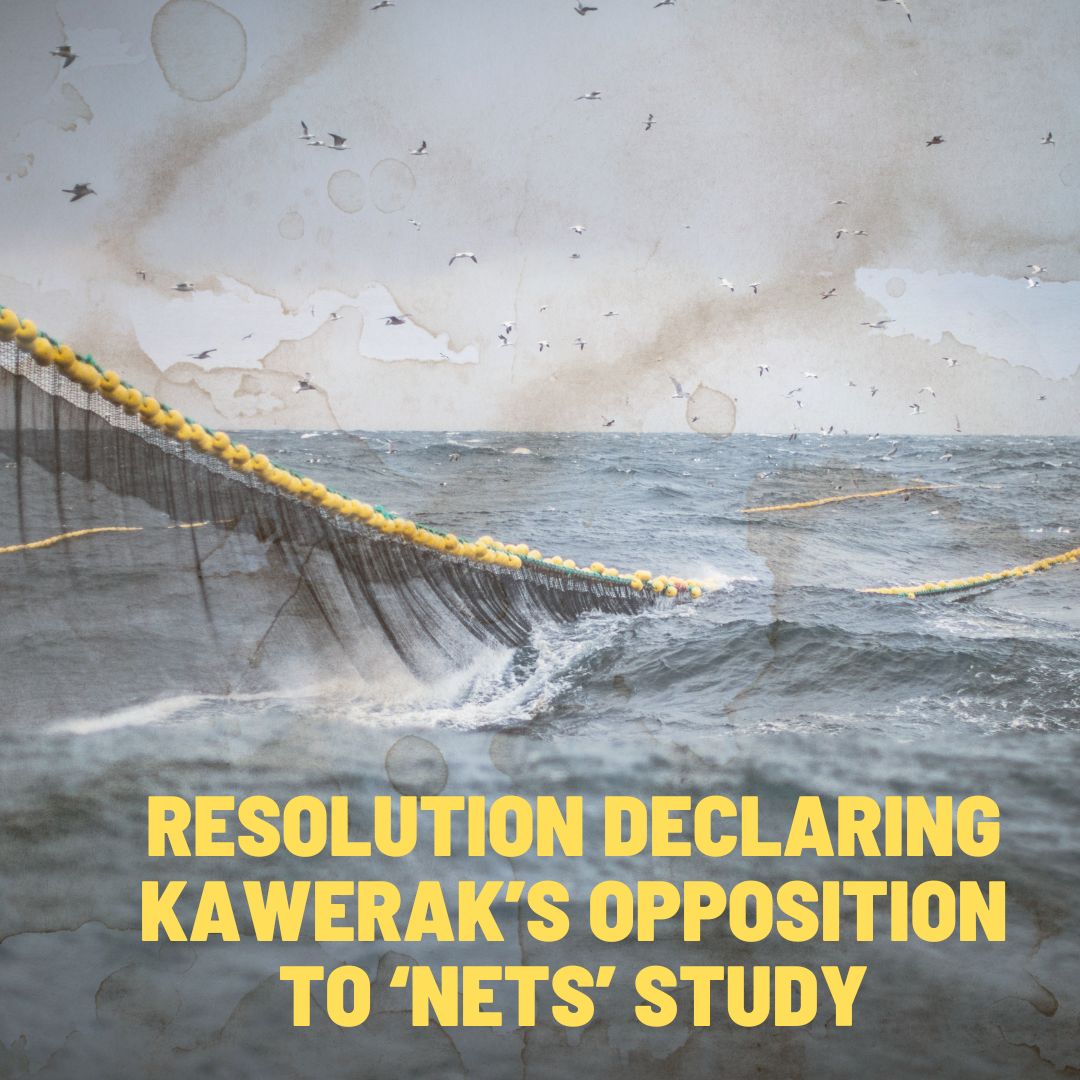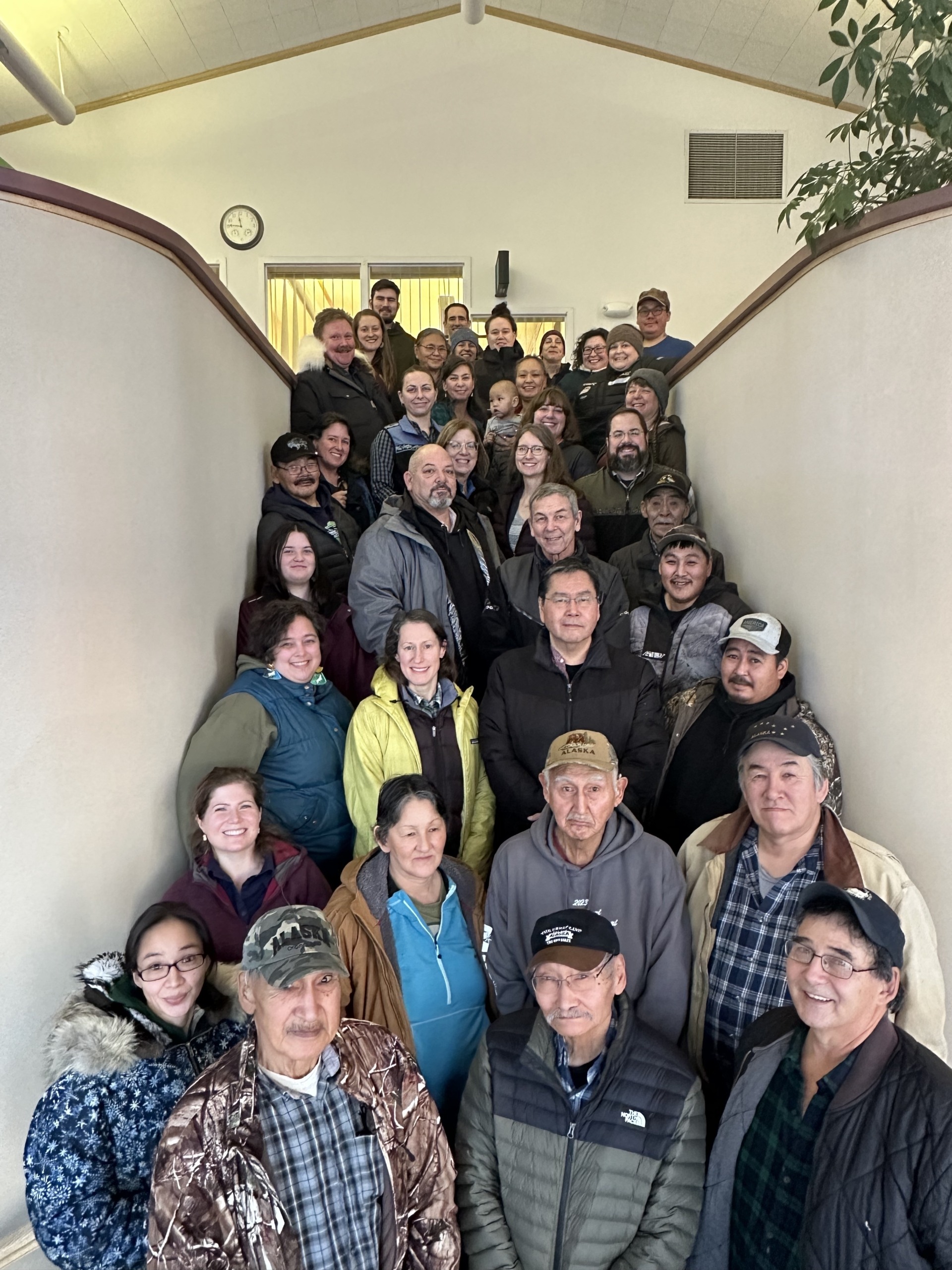Partners from the Alaska Sea Grant, Woods Hole Oceanographic Institution, Alaska HAB Network, Alaska Ocean Observing System, NOAA and North Slope Borough worked together on developing a poster/informative fact sheet about the presence of Alexandrium Algae, Saxitoxin and its affect on the marine wildlife. The following is the content of the published document, and the poster is also available for download, Alexandrium Algae-Saxito Poster
2018/2019 Bering Strait / Chukchi Sea: Alexandrium Algae, Saxitoxin, and Clams
During summer 2019, high concentrations of the algae called Alexandrium catenella were detected in the Bering Strait/Chukchi Sea. Alexandrium c. algae can produce the biological toxin called saxitoxin. Eating a high level of saxitoxin can cause Paralytic Shellfish Poisoning (PSP) in humans and marine mammals. Saxitoxin targets the nervous system and blocks nerve function. PSP symptoms include breathing difficulties and paralysis in humans as well as marine mammals. The Alexandrium algae concentrations were high enough in the seawater to potentially make shellfish unsafe to eat. Although most shellfish sampled onboard HEALY were safe to eat, clams at two locations had high saxitoxin levels and were unsafe to eat. People should remain vigilant and immediately alert their healthcare providers if they feel sick after eating seafood in the Bering Strait/Chukchi Sea region.
Background:
A recent study (Lefebvre et al. 2016) detected two types of algae-produced biotoxins (domoic acid and saxitoxin), in the stomach contents and feces of walruses, whales, and ice seals in the Bering Strait / Chukchi Sea regions. Little is known about algal biotoxin exposure risks to these important food resources. Clams, crabs, and other shellfish can concentrate the biotoxins in their tissues by filtering seawater and eating tiny algae. Marine wildlife will also concentrate saxitoxin in their bodies if they feed on zooplankton, filter-feeding fish, and other prey that contain saxitoxin. Recent detection of algal biotoxins in marine mammals from western and northern Alaska has created concerns regarding potential health effects to important marine wildlife—and include serious food-safety concerns among coastal communities.
Bering Strait / Chukchi Sea Alexandrium algae high concentration events:
During August 2018 and 2019, researchers working onboard the USCG icebreaker HEALY, reported a “bloom event”, due to high concentrations of Alexandrium algae (~1,500-8,000 cells per liter) in the seawater just north of the Bering Strait and in the Chukchi Sea, with lower concentrations (~1,000 cells per liter) ~60 miles northwest of Utqiaġvik.
Why are we concerned about Alexandrium algae counts and Saxitoxin? Alexandrium cell counts of thousands per liter are considered high and would likely make shellfish dangerously toxic for consumption. Saxitoxins are a well-known human health hazard in the Gulf of Alaska, eastern Aleutian islands, and other areas of the coastal U.S. PSP can occur when people eat clams, crabs, and other seafood contaminated with high levels of saxitoxin. A federal US Food and Drug Administration seafood safety regulatory limit of 80 ug per 100 grams of shellfish has been established to protect human consumers of shellfish from PSP. Saxitoxin levels cannot be lowered by cooking, freezing, or aging contaminated foods. Thus, the cleaning, preparation, and eating of marine wildlife that eat algae – or whose prey eat algae – should be undertaken with care. The amount of saxitoxin consumption required to harm marine wildlife in the Bering Strait region and/or Chukchi Sea is currently unknown.
Were the saxitoxin levels high in marine organisms sampled onboard HEALY? During the 2018/2019 harmful algal “bloom” events described above, samples of filter-feeding marine organisms including clams, worms, and zooplankton (krill and copepods) were collected. Moderate levels of saxitoxin (below the regulatory limit) were detected at all locations in the clams, worms, krill and copepods. However, during August 2019, clams at two offshore locations (70 miles north of Saint Lawrence Island and 50 miles north of Cape Lisburne) had high saxitoxin concentrations unsafe for human consumption and above the seafood safety regulatory limit. An algae poisoning event is diagnosed in an animal by the combined observation of unusual behavioral symptoms, the presence of high algal concentrations (“blooms”) nearby, and/or high toxin levels in marine wildlife and/or their prey. This valuable information highlights the need to monitor biotoxins in seawater and marine wildlife to understand when saxitoxins affect wildlife health and/or poses public health/food-security risks for humans.
Thoughts on subsistence uses of marine wildlife:
- Based on the current global understanding of algal biotoxins chemistry and health impacts in marine mammals, muscle and blubber are not likely to accumulate saxitoxin in levels that pose a human health hazard – although these tissues have not yet been fully tested.
- Thorough cleaning of the inside of marine mammal intestines and stomach contents with water is an important aspect of customary food preparation. We do not know if these practices safeguard against ingesting saxitoxin when eating these tissues. Eating intestine, stomach, and/or their contents in areas with known biotoxins likely has the same risk as consuming shellfish from those areas (Deeds et al. 2008). However, no one reported PSP symptoms from eating traditional seafoods in Bering Strait or Chukchi Sea coastal communities during August 2018 or 2019.
- In Alaska, PSP is generally associated with eating contaminated shellfish (e.g., clams, crabs). Thus, eating clams, crabs, and other shellfish, has always carried a risk of ingesting algal toxins, whether shellfish are gathered from the beach or from the stomach of a walrus or bearded seal.
- Remember: you cannot see, smell, or taste algae toxins. Cooking or freezing will not lessen the toxin’s effects.Since we do not know what our future will bring, remain vigilant and observant – and communicate. Communication is essential to understanding whether an algal toxin event is affecting marine wildlife (e.g., clams, crabs, marine mammals, etc.) in northern and western Alaska.
If you feel sick after eating seafood, please contact your health care provider immediately.
For more information on the impact of harmful algae toxins in humans—symptoms, treatment, etc.—call the Alaska Section of Epidemiology at (907) 269-8000 Mon-Fri or (800) 478-0084 after normal work hours
Remain vigilant: if you see any marine wildlife acting in an unusual manner or dead in the Bering Strait / Chukchi Sea region please contact:
- Alaska Sea Grant – Gay Sheffield: (907) 434-1149
- Kawerak – Subsistence Program: (907) 443-4265
- Eskimo Walrus Commission: (907) 443-4380
- NSB-Dept. of Wildlife Management: (907) 852-0350
- NOAA – Alaska Marine Mammal Stranding Network: (877) 925-7773o
- USFWS – Marine Mammals Management: (800) 362-5148
Literature cited
Lefebvre, K., et al. 2016. Prevalence of algal toxins in Alaskan marine mammals foraging in a changing arctic and subarctic environment. Harmful Algae 55:13-24.
Deeds, J., et al. 2008. Non-traditional vectors for Paralytic Shellfish Poisoning. Marine Drugs, 6:308-348.
Download the informational poster:
Alexandrium Algae-Saxito Poster




